I didn’t want to like this holster.
It wasn’t a question of workmanship or materials. It was obvious from the start that this holster was made of good stuff and had been assembled with care and attention to detail. This was not one of those holsters (and there are many out there) that missed its calling as a chew toy for a large dog.
The problem was, the holster just didn’t align with my personal preferences, prejudices, and philosophy about carrying a concealed firearm. If I had seen this holster in a catalog, I would have skipped past it on autopilot. My subconscious mind would have rejected it immediately—“nothing to see here”—and kept turning the pages.
The funny thing is, I’ve come to like it.
The Kimber connection
The holster came into my possession as part of a quest to secure some T&E holsters for the new Kimber K6s that was on the way.
For many years, one of my “go to” sources for quality leather gear has been Aker International. I’ve owned and used a lot of Aker holsters and belts over the years, and have always been impressed by the combination of materials, workmanship, and value that I’ve found in their products. So, when it came time to find some hide for the K6s that I had coming for test and evaluation, Aker was one of the first places that I turned to.
While Aker has an extensive catalog of products to choose from, their focus has always been oriented towards the law enforcement market. They’re a top supplier of leather gear for police departments across the nation, and have scored an enviable amount of large agency contracts for duty holsters, belts, and accessories intended for patrol. Additionally, they’ve captured a significant amount of the non-patrol duty market (detectives, undercover officers, etc.) and the off duty market as well.
So, while there’s a lot of SKUs in the Aker catalog, most of the fits are limited to guns that are currently popular in police circles. As you might expect, that translates into a lot of bottom feeder options, but not a lot of choices for us RevolverGuys. Aker catalogs holsters for the ever-popular Smith & Wesson J, K, L and N frame revolvers, but sadly, you won’t find any other revolver brands in their fit chart.
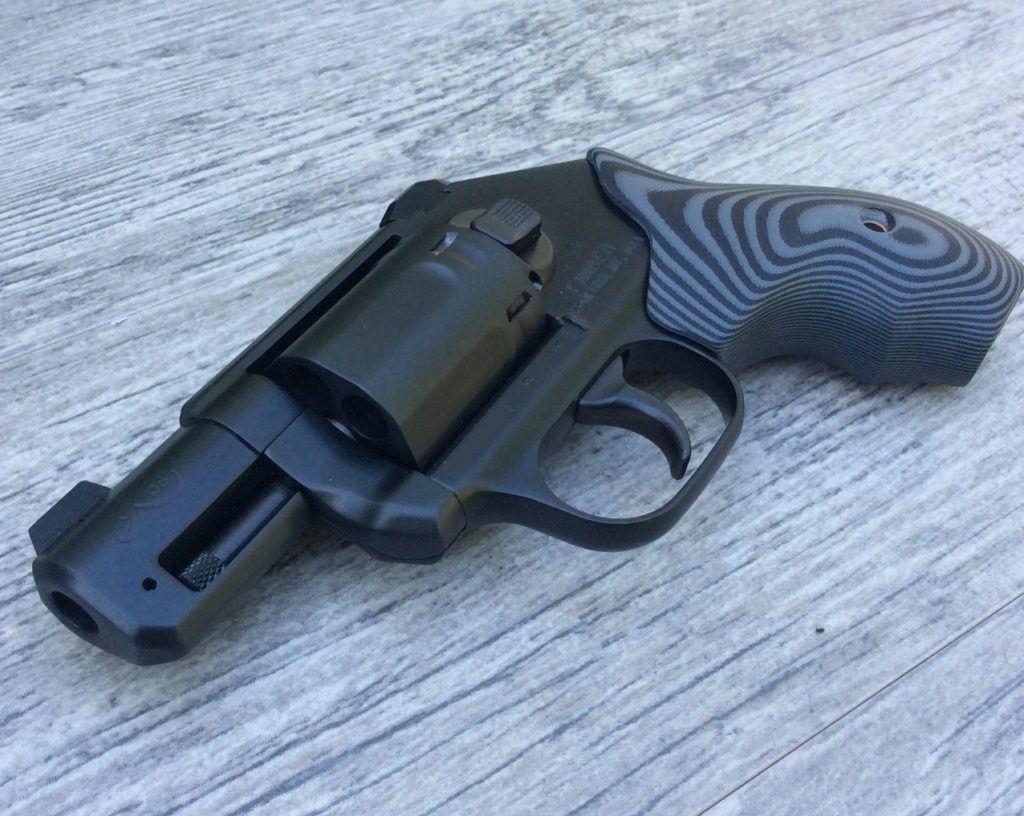
Aker recognizes this is a gap that needs to be filled, so they were happy to work with me when I requested a holster cut for the new Kimber K6s. My gun hadn’t arrived yet when I made the request, and Aker didn’t have an exemplar to work with, so we weren’t sure how the gun’s dimensions would stack up against known standards like the Smith & Wesson J and K frame guns. Therefore, Aker sent me a holster for a J-frame and a K-frame to get started, with the intention that we could test the gun’s fit when it finally arrived, and go from there.
As things turned out, the shape and dimensions of the K6s were so unique that the gun fell somewhere in the middle. The well-boned J-frame holster was much too small in most areas, but the K-frame holster was too big and offered a sloppy fit. We honestly didn’t expect anything different, but it was important to confirm this before Aker spent time and money developing unique patterns, dies and tooling for the new gun fit.
The world according to Mike
After the fit test was completed, the J-frame holster got placed aside on my desk, along with several others. It sat on top of the pile for a month or two before circumstances finally prompted me to give it a test drive with the gun that it was designed to fit.
I should explain that while I’ve been carrying J-frame revolvers longer than any other type of concealed firearm, they have always filled a very particular niche in my battery. The J-frames are not my preferred choice—they’re simply the guns that I carry when I can’t carry a more substantial weapon. With rare exceptions, I carry my J-frames only when my clothing or my environment prohibits me from carrying a larger gun with greater capability.
As an example, if I’m dressing up and can’t walk around with an untucked shirt, then the J-frame in a pocket holster gets the nod. Similarly, when the when the winds are blowing strong and there’s a significant risk that a gust will either lift my shirt and expose the gun on my belt, or cause it to print too much when the wind is plastering my shirt against my torso, then the pocket rocket gets another lap around the track. On those occasions when I carry a second gun (which are infrequent, even though I think it’s a good idea), the J-frame in a pocket holster gets the call as well.
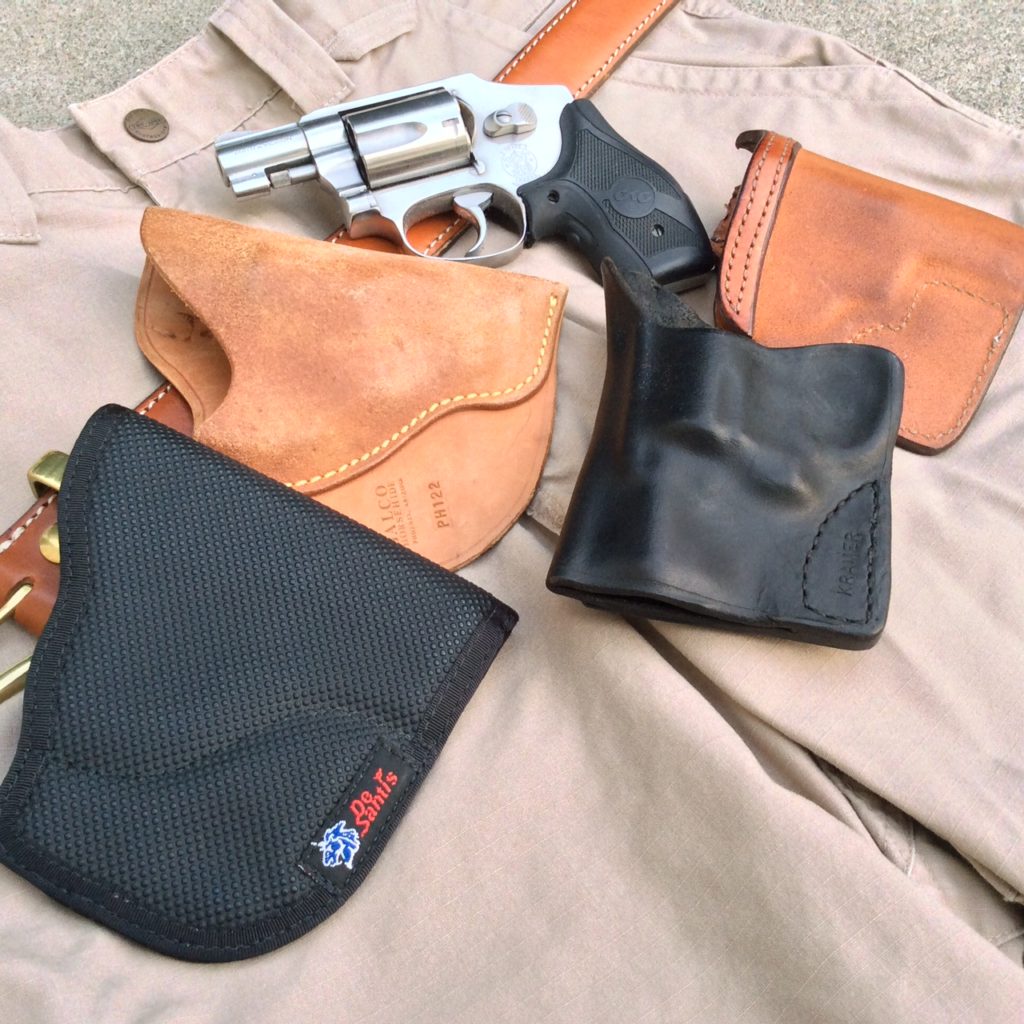
If I were working Patrol, a J-frame would have a permanent place on my ankle (and possibly my armor, as a third gun), but I’m not wearing the bag and I’m not fond of ankle holsters for concealed carry, so I don’t have any of those.
I have never been a fan of carrying a J-frame on my belt, because I always felt that if the circumstances allowed belt carry, then I needed to be carrying a more capable gun—something bigger, with better ergonomics, greater capacity, and increased power. So, my J-frames have always worn grips designed for deep concealment (“boot” style grips of wood or rubber, with the Crimson Trace LG-405 getting the nod for the last 10 years or so) and they have always ridden in a pocket holster of some sort. Before the Aker sample arrived, I simply didn’t own a J-frame holster that wasn’t a pocket holster.
Now, please understand that I’m not saying you’re wrong if you do things differently. I willingly accept that your circumstances and preferences might be different, and it might make a whole lot of sense for you to carry a J-frame revolver on the hip (or somewhere else) as your primary. If that’s how you roll, then I’m all for it. I’m just saying that for me, the J-frame has always been a “compromise gun” that got carried in a pocket when circumstances prevented me from carrying something better. Andy Sipowicz might have been happy carrying his Model 36 with splinter grips in a belt scabbard, but this RevolverGuy has always been uncomfortable with asking a J-frame to do a bigger gun’s job.
An unEXPECTed development
So, the Aker Model 160A collected dust until my lower back started acting up one day. I wasn’t up to carrying the weight of a double-stack autopistol with a spare magazine, and the Siren-song of the Model 640 was coming through loud and clear. The 640 is all-steel, but the trim little J-frame weighs less than my normal carry pistol, so I figured I’d downgrade for the day. The 640 wasn’t the most capable gun I had, but it would be easier on my back and would keep me in compliance with Colonel Cooper’s “First Rule of Gunfighting.”
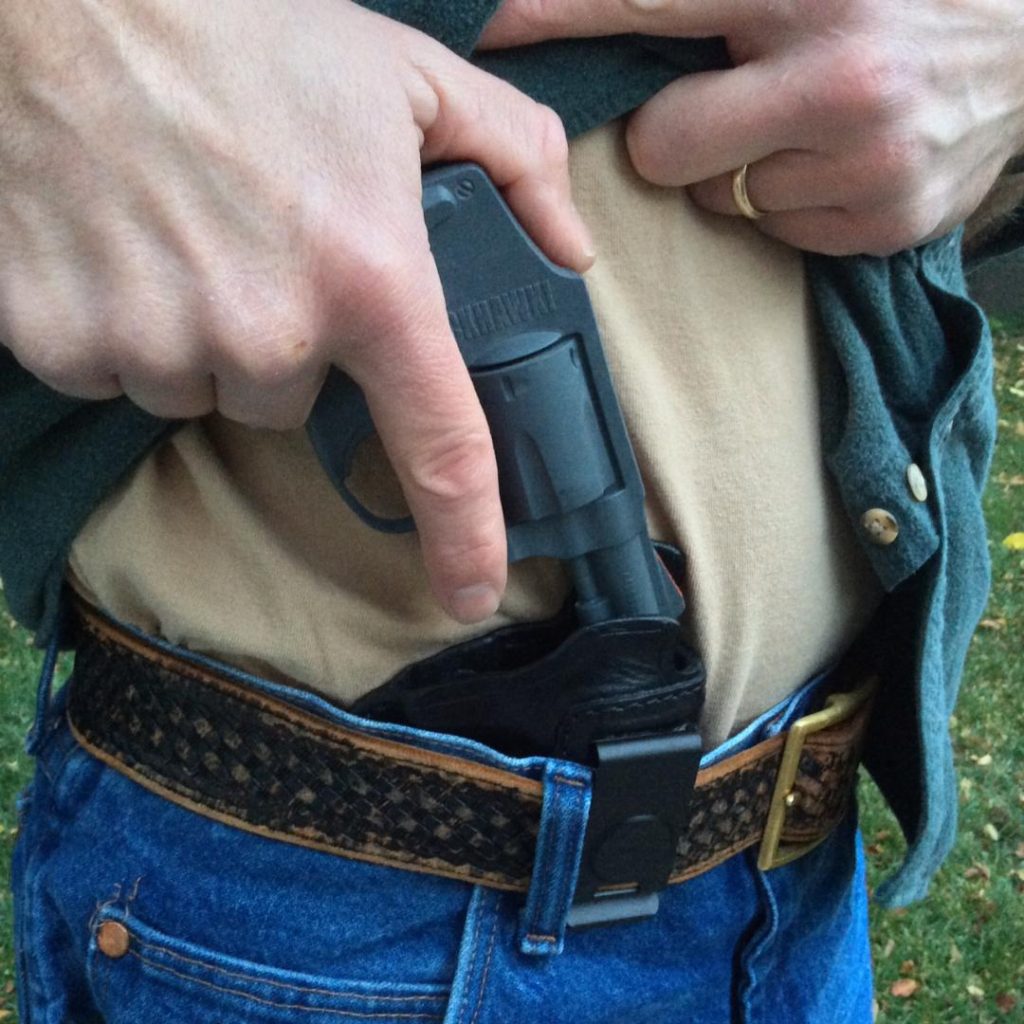
As I was putting the holstered gun into my pocket, my eye caught the lonesome Aker holster on my desk, and I thought, what the heck, let’s give it a try. I grabbed the holster and my J-frame “blue gun” (which is actually a now-discontinued “gray gun” from Blackhawk!), and spent some time practicing my presentation from the new rig. It seemed to ride nicely and the draws were coming together, so the gray gun got traded for the loaded 640 and I went about my business for the day.
I didn’t realize it, but the seduction had begun.
Shake it off
The Aker International Model 160A is also known as the “Spring Special Executive Open Top IWB.” It’s an open top, inside-the-waistband (IWB) holster that’s secured to the belt by means of a steel spring clip.
Now, if you had provided me that explanation sight unseen, I’d have built an image of the Model 160A in my mind that wouldn’t have been favorable. When I was a youngster, holsters of that description were the de facto standard for most coppers who carried off duty guns, and had been for some time. Legions of police officers carried small autos and revolvers in open top, spring clip holsters, but they couldn’t have been more different in construction and materials than the Aker Model 160A.
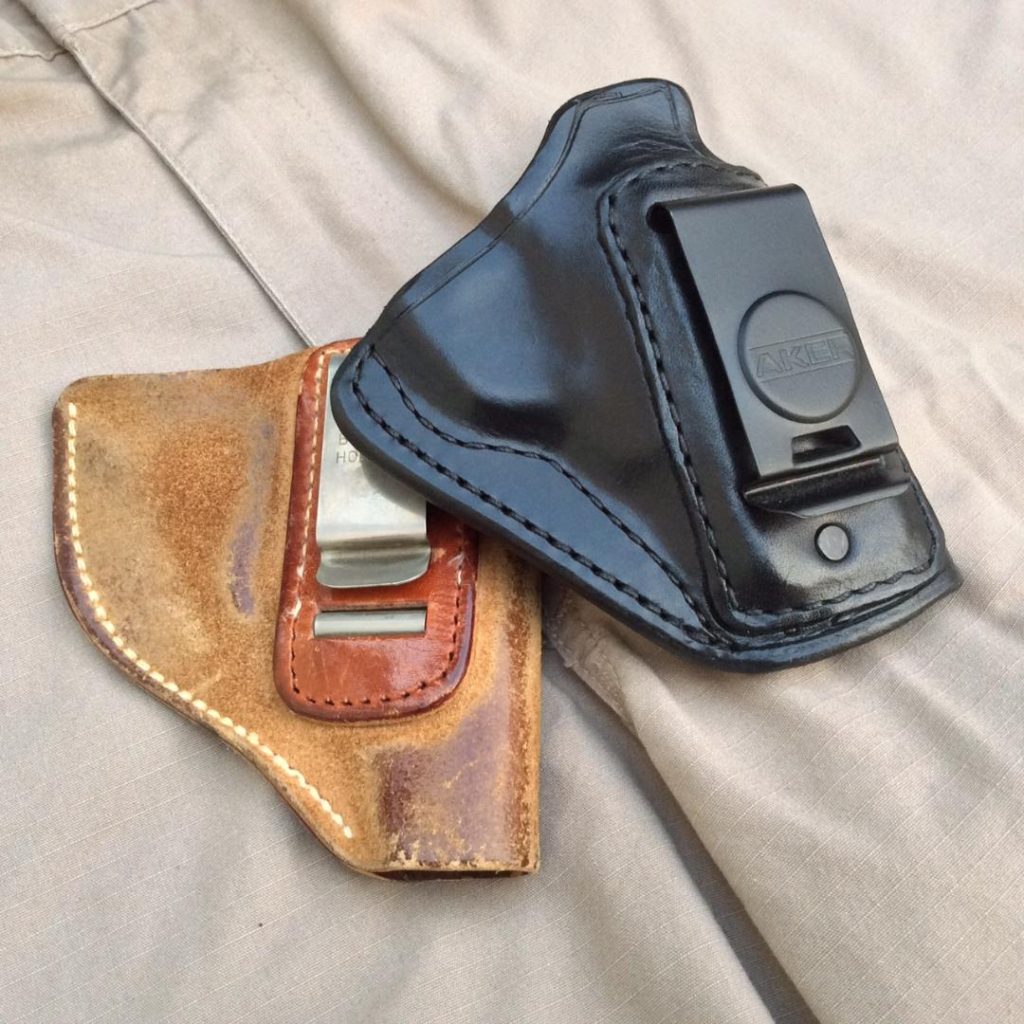
Those older holsters were typically made out of extremely thin, rough side out leather (most often, a soft suede) that allowed the holster to collapse when the gun was drawn. In the early 80s some of these holsters were reborn in ballistic nylon (you could have them in any color, as long as it was black), but the song remained the same—they all collapsed when the gun was removed.
Speaking of removal, the spring clips did such a lousy job of gripping the belt (or the trousers, if you were lazy and didn’t wear a proper belt—shame on you!) that chances were good the holster would come out along with the gun. If you frequented the police ranges back then, it was a common sight to see a detective (or a cop with his off duty rig) draw the whole package at once, and then spend the next few seconds trying to strip the holster off the gun with the support hand–or worse yet, wildly shake it off like a booger that was stuck on his finger—so he could get on with the business of shooting. It always looked funny and made for a good joke in training, but it was a deadly serious flaw that could easily cost the officer his life on the street.
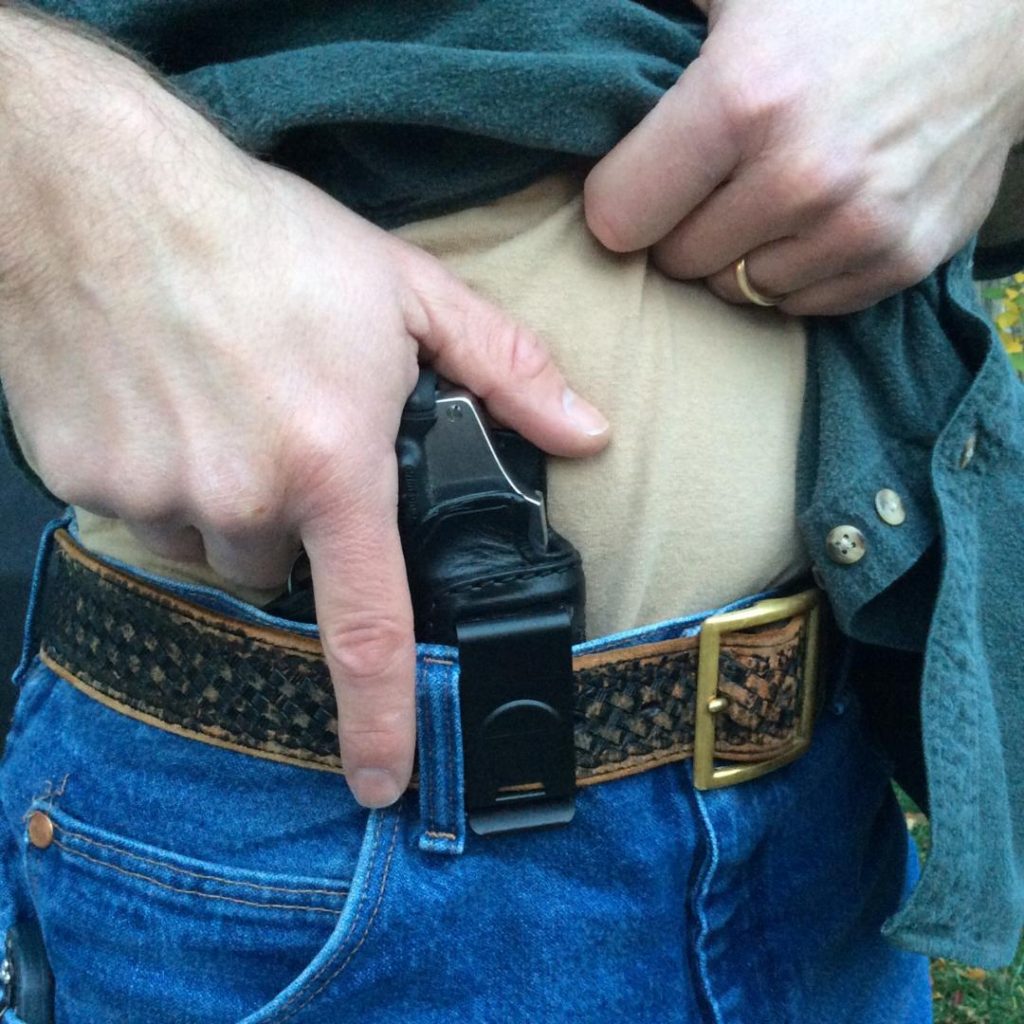
As an active observer of these shenanigans for many years, I developed a strong prejudice against the type. Early on, I swore off of any holster equipped with a spring clip. Even when the improved J-hook clips came into popularity (the first one I saw was on a Galco holster, but I’m not sure who pioneered the idea), I couldn’t be bothered with them. For me, it was belt loops or nothing, convenience be damned.
Not your daddy’s holster
So, I was predisposed to hate the Model 160A from the start, but I very quickly realized that this little IWB holster had little in common with those leather losers from the past.
To begin with, the Aker Spring Special Executive Open Top (let’s just call it the “Model 160A,” because that’s a mouthful!) is crafted from a high quality cowhide–8 to 9 ounce leather (about 1/8” thick), to be specific. It’s formed into a rigid pouch that maintains its shape by virtue of the material, the molding, and the polymer reinforced band which encircles the mouth of the holster. The Model 160A neatly holds its shape when the gun is removed, which allows you to easily and safely reholster the gun without removing the holster from the belt, first. Your belt tension will not collapse the mouth of this holster, and force you to pry it open with the muzzle of your gun (yikes!) as you try to reholster one-handed.
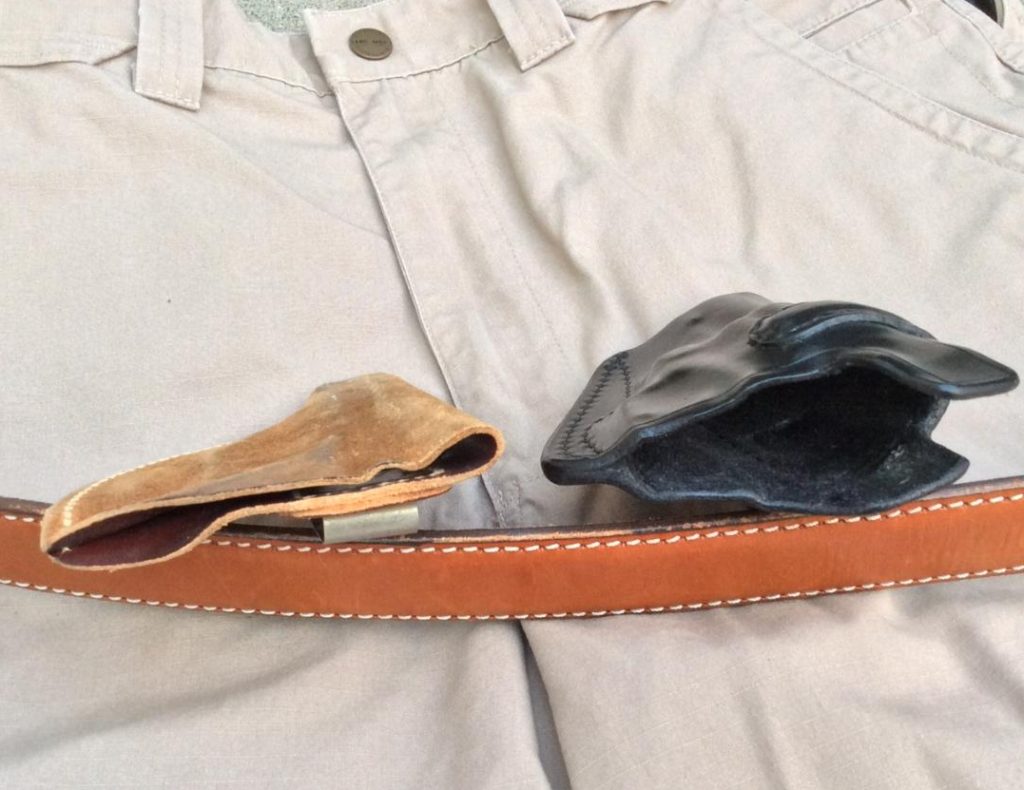
Instead of being rough side out, the Aker holster has the smooth, sanded surface on the outside. It’s nicely dyed, waxed, and buffed to a sheen. The leather is devoid of any flaws, and looks smooth and attractive. The top edge along the open mouth of the holster is creased for cosmetic appeal and to round the corner of the hide to ensure there’s no sharp edges to irritate.
The pocket is perfectly tailored for the gun, and provides an uninterrupted firing grip on the revolver while it’s in the holster. The spring clip holsters of old were often sloppy in their fit because they were designed to accommodate a range of guns from various makes, but the Aker holster is specifically built for one gun only and hugs it tightly. The Aker pouch is nicely boned, showing an impressive amount of moulding detail, including individual cylinder flutes, the trigger blade, the step in the frame where the yoke is located, and the recessed area under the barrel where the ejector rod lies. It holds the gun with just the right amount of tension–enough to be secure, without impeding the draw.
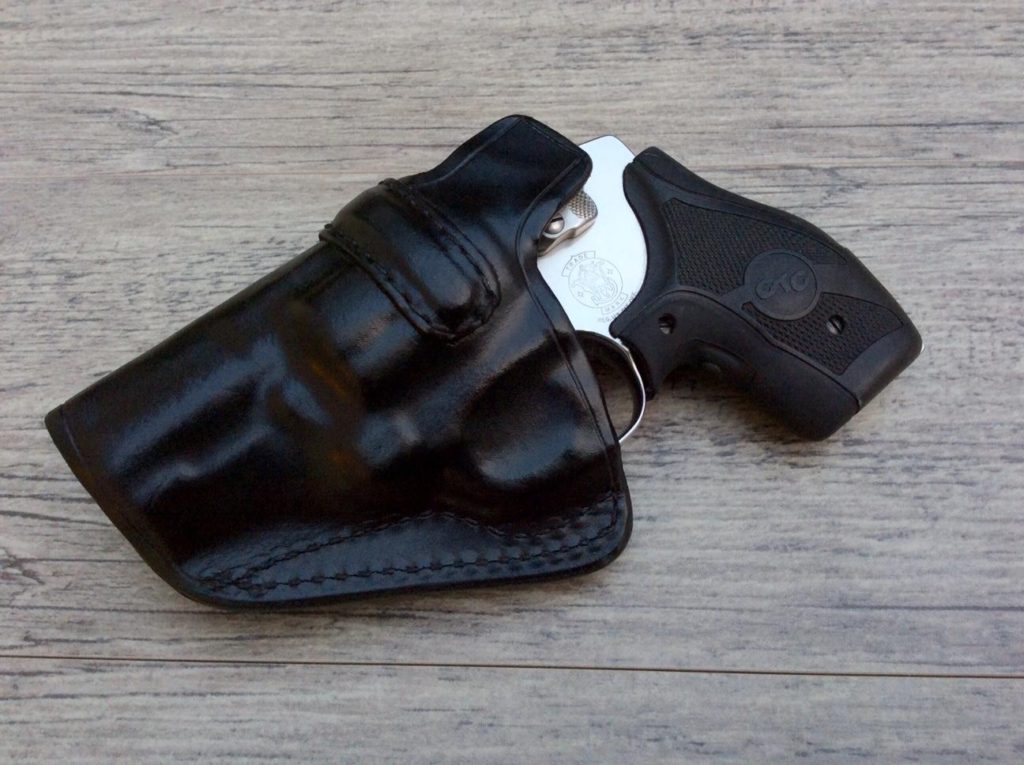
A protective guard on the body side of the holster covers the cylinder latch, preventing it from irritating your skin or being accidentally activated. It also serves as a “push off” for the thumb as the revolver is drawn. This guard has a similar matching tab on the waistband side of the holster, and the two of them cant inboard and provide additional retention for the gun. I can turn the holster upside down, and these tabs will act, in concert with the boning and shaping of the pouch, to keep the gun in the holster (as long as I don’t shake it).
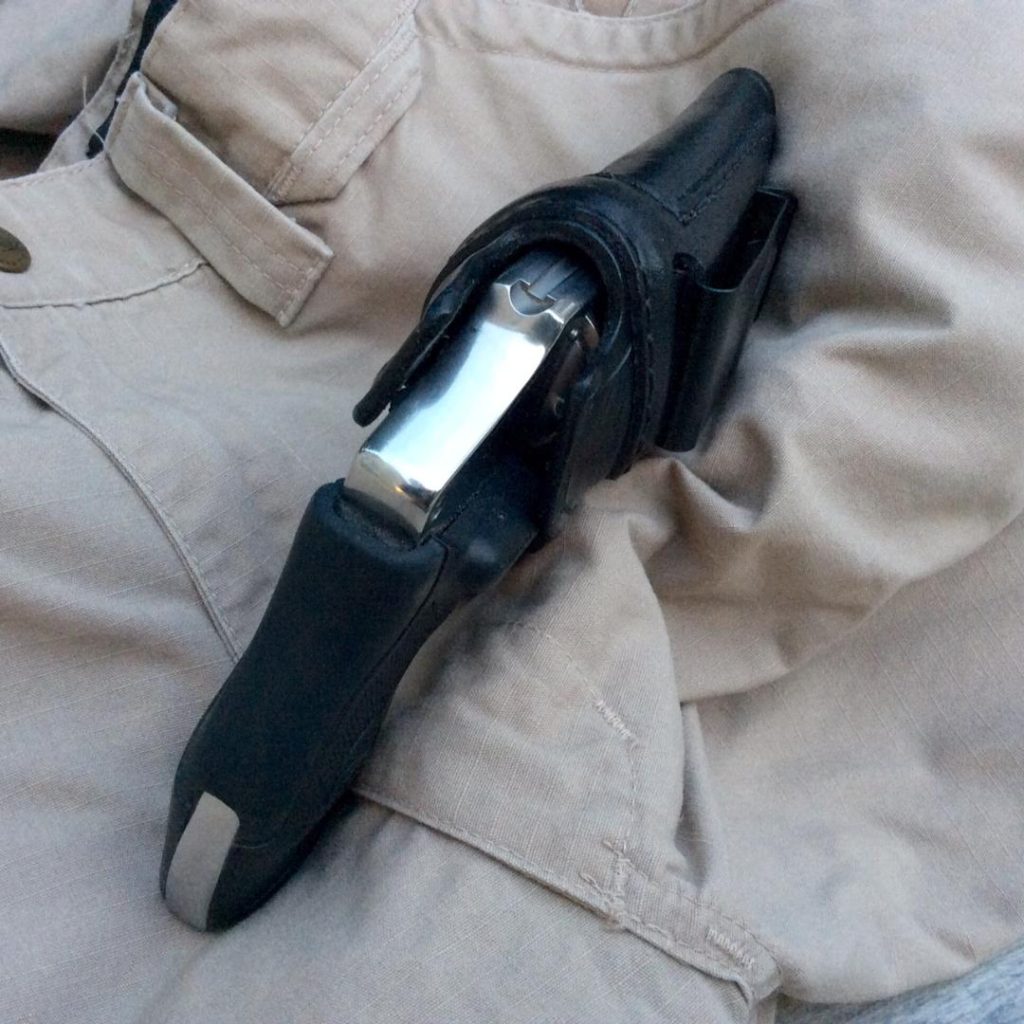
The pouch is attractively stitched with a black synthetic thread that matches the black leather. The critical rear edge of the pouch is double-stitched to provide integrity and help guarantee the fit and retention of the pouch.
Get a grip
It was easy for me to accept that the materials, design and manufacture of the pouch were excellent, but the spring clip was a tougher sell.
As I mentioned, I have had a longstanding distrust of spring clips and have consciously avoided them for several reasons. The first and most important concern is security, because I’ve seen too many of these clips fail to hold the rig in place. The second concern is stabililty, because too many spring clips are built in a way that allows the holster to easily rock back and forth on the belt, shifting the location of the grip and making for inconsistent draws.
I’m happy to report that the Aker spring clip does an admirable job of keeping the holster on the belt during the draw. The robust clip is much stronger than the flimsy ones that came on the old breed of spring clip holsters. On the backside of the clip, there’s a recurved metal tab that hooks onto the bottom edge of the belt when the holster is raised, preventing inadvertent removal. Retention is therefore not solely dependent on the tension of the metal clip. In all of the practice draws I’ve performed with the Aker Model 160A, I’ve never had the holster come off the belt with the gun.
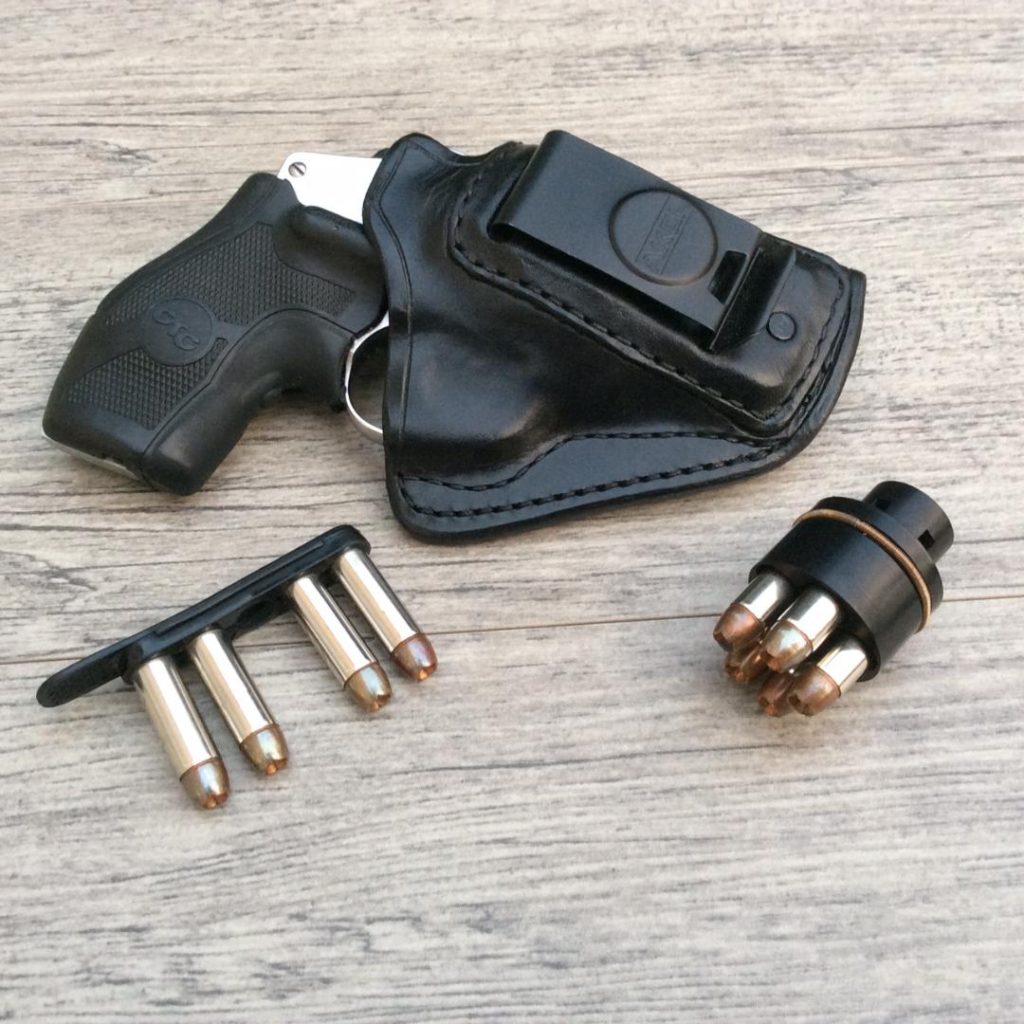
The clip on the holster is almost 1 ¼ inches wide, which makes it fairly stable on the belt. The clearance between the inside top edge of the clip and the hook at the bottom is slightly over 2 inches, so the clip works best when a 1 ¾ inch belt is worn. The holster can still rock back and forth a little bit, but for someone who wants the convenience of a clip mounting system for easy on/off capability, this clip will do a good job of keeping things in place, particularly if a 1 ¾ inch belt is used. If you wear one of the double-thickness or reinforced gunbelts out there, it will be even more stable, since the belt will fill more of the gap between the holster body and the inside surface of the clip, giving a tighter fit.
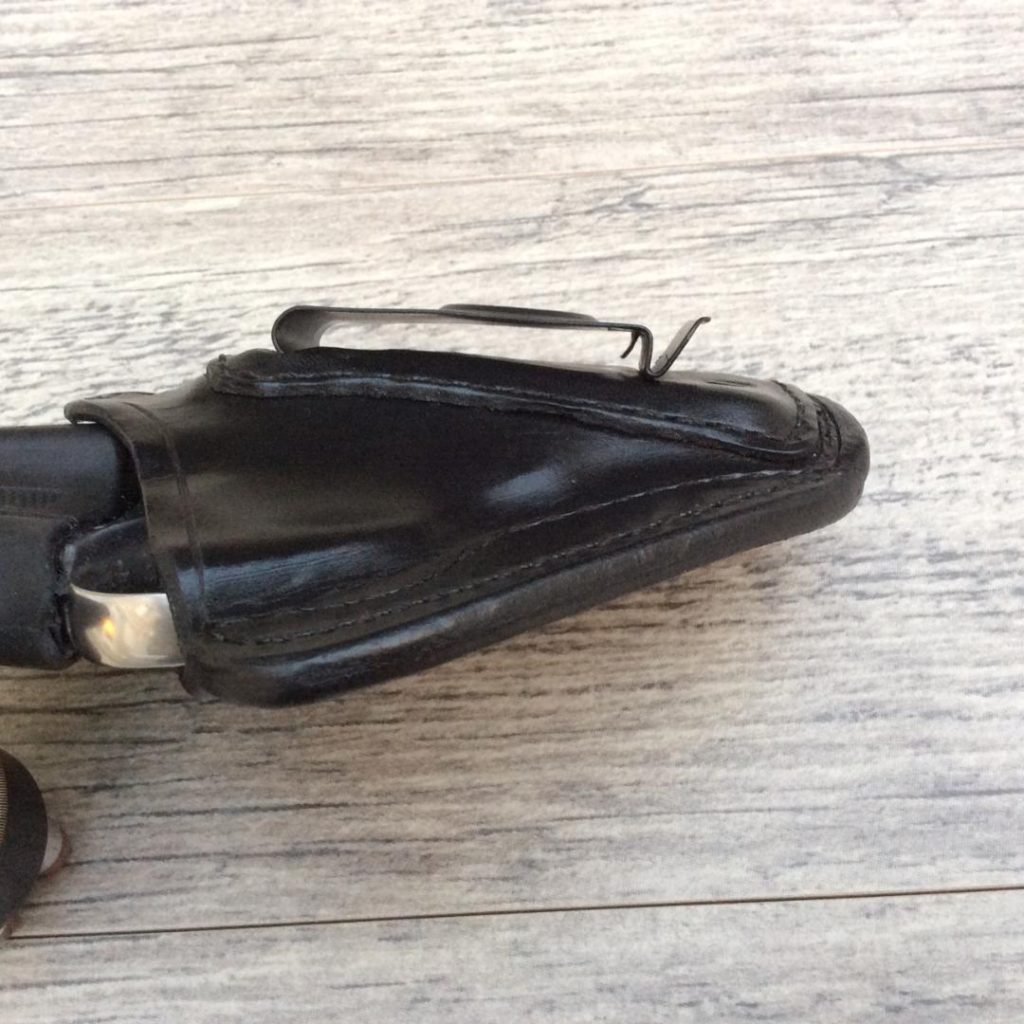
Despite my prejudice against belt clips, I found that the Aker clip secured the holster during normal activity, and made it pretty stable on the belt. I’d still prefer a holster with loops, like Aker’s Model 251 D.E.A. IWB holster, but that’s just a personal preference. If you like an IWB holster with a clip mount, this is a good one for you.
Incidentally, if your needs call for a thumb break, the Aker Model 160 is the same product, with that added security feature.
Wearing the Spring Special Executive
I like to carry my guns in the appendix IWB (AIWB) position, and the Model 160A worked nicely in that role.
One of the issues with spring clip holsters is that the clips don’t do a very good job of accommodating differences in the location of pants belt loops. A holster with loops can usually straddle an inconveniently-placed belt loop without much drama, but a spring clip can’t work on top of one. This problem is exacerbated when you carry AIWB, as the placement of the holster is very important for comfort and concealment when you carry in this position. Fortunately, the spring clip on the Aker Model 160A worked with the placement of the belt loop on my Wrangler jeans, and I was able to position the holster in the right place.
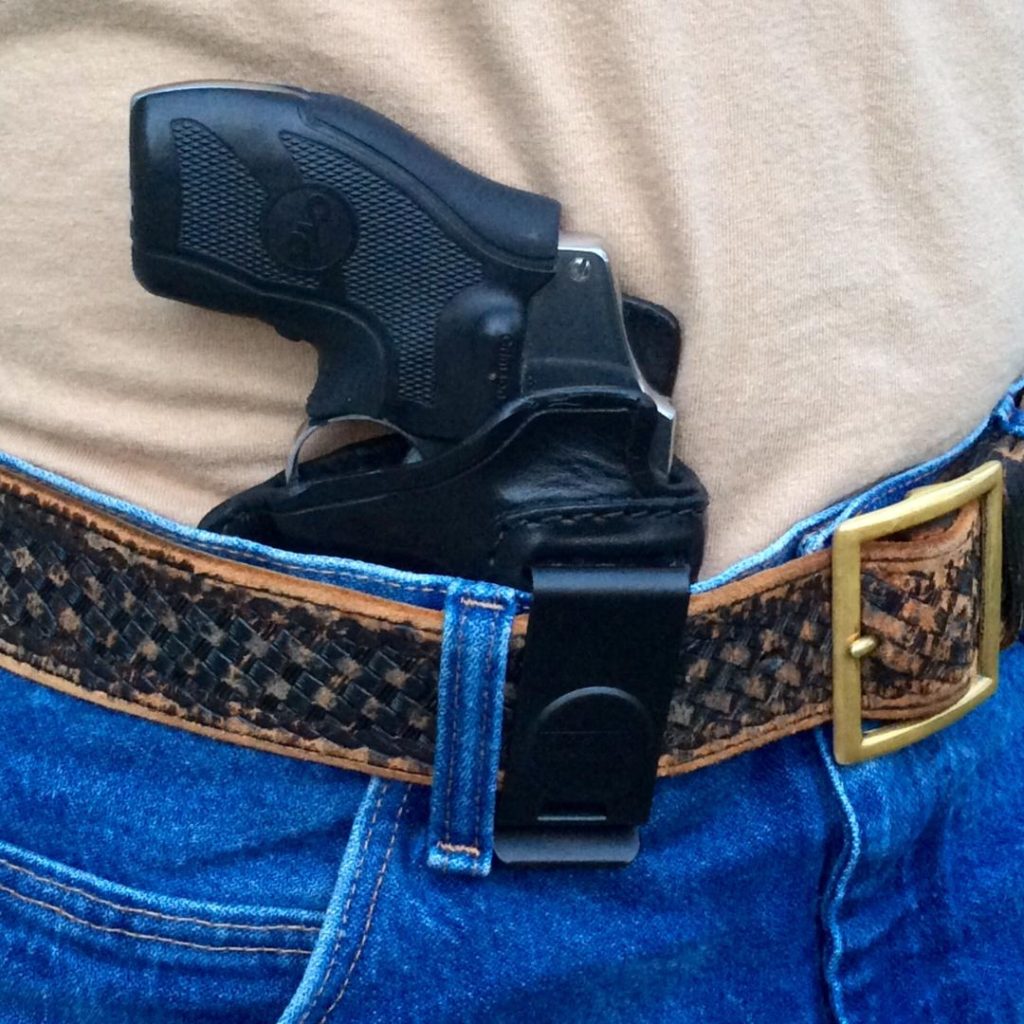
The muzzle end of the 160A had a little taper which made it more comfortable than the wider, square-bottomed holster that normally rides there. Those of you who carry AIWB understand how a holster that jabs you in the wrong place can be a misery, so it was nice that the Aker holster was so comfortable to wear.
Ride height is an important factor for any IWB holster, and it becomes even more critical when you’re carrying a revolver. The wide cylinder needs to ride at the proper height for best concealment and comfort, and I found that the Model 160A was built properly, with the rear edge of the cylinder riding just slightly above (about a quarter inch, maybe three-eighths) the top edge of the belt. The gun sat low enough that the center of gravity didn’t want to lever it away from the side of my body (like you get with a high ride holster), but still allowed me to get a full firing grip on the revolver without interference from the belt.
It’s been my experience in carrying AIWB that a holster body which is too short will lever out from your torso and sacrifice concealment by poking the grip frame outboard. This is especially true if you carry an autopistol, where most of the gun’s weight is concentrated up high, in the grip frame. The high center of gravity works against you there, and you’ll often find that a longer holster body will help to counteract the effect and lever the gun back towards your torso.
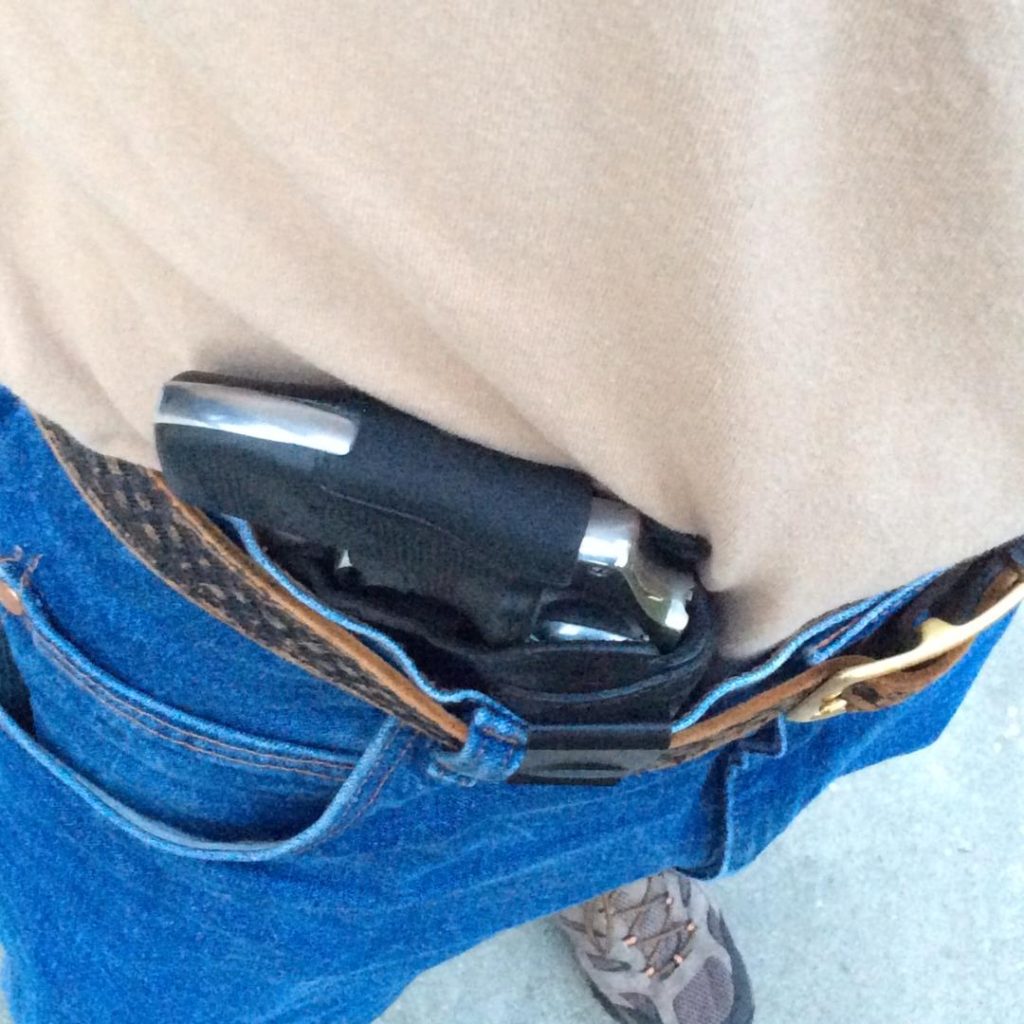
As a result, I was pleasantly surprised to find that the short version of the Model 160A didn’t suffer this too much, even though it was cut for the stubby 1 7/8 inch barrel of my 640. It levered outboard a little, and if the gun had a longer tube (maybe a 3 inch barrel—an excellent length for a belt-carried revolver) things would have been even better, but the ride was certainly acceptable and I didn’t feel like the gun printed too much. In fact, the snub was exceptionally easy to conceal in the AIWB position with this holster.
I attribute most of that to the low center of gravity afforded by the revolver—the cylinder simply concentrates the bulk of the mass down below the belt line, eliminating the tendency for the gun to tip outboard. Also, the grip is thin on a J-frame, unlike the boxy grip of a double-stack pistol. The fact that my gun wears boot-style grips didn’t hurt either, as there’s simply not a lot of length or bulk to print through clothing.
A new dilemma
After my initial success with this holster, I shelved my square gun for a while and continued carrying the round gun in the Spring Special Executive Open Top. Frankly, I found it to be comfortable, convenient and concealable.
This presented a dilemma for me, because it turned my gun carrying philosophy upside down. I have always endeavored to carry the largest, most capable gun that my dress and circumstances permit, and have eschewed carrying a smaller gun for matters of pure convenience. I’ve steadfastly resisted the temptation to “go light” when I wasn’t forced to.
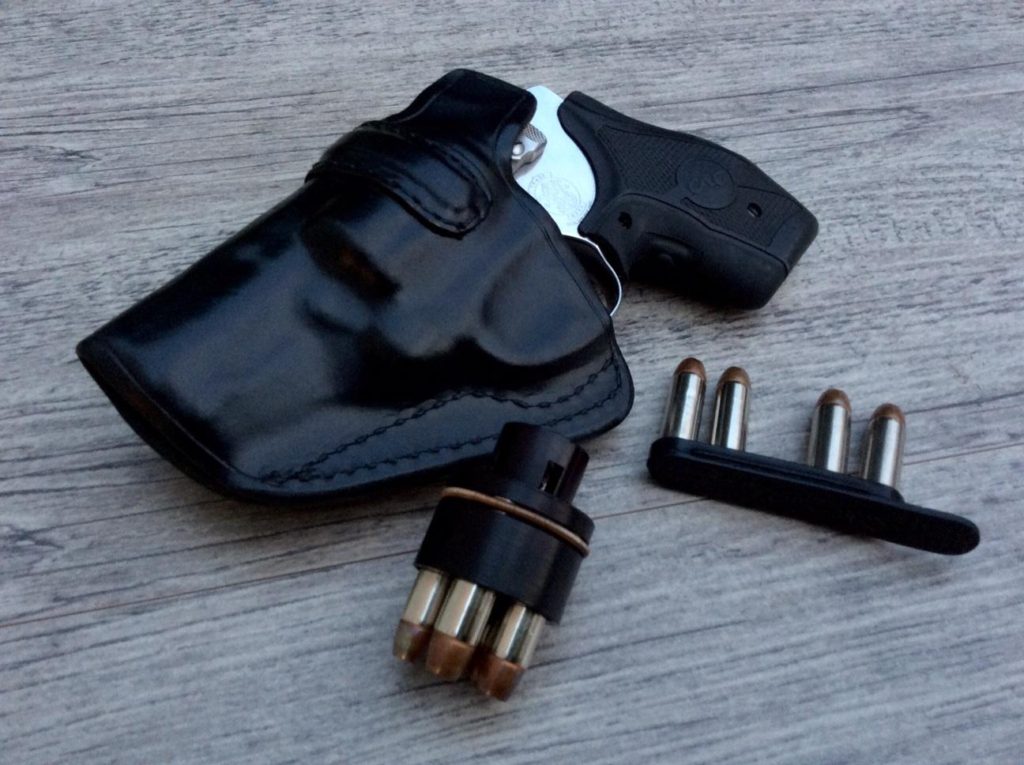
This Spring Special Executive holster from Aker beckoned me to cheat though, and made it easy to do. If I wasn’t more committed to my carry philosophy, I could easily slip into a habit of carrying the lesser gun in this solid holster from Aker.
I’m not going to do that, but it is nice to know that I have another option for those times when my back isn’t up to the task of carrying the bigger gun around on the belt. A good pocket holster solves a lot of problems and affords many advantages, but I’d prefer to carry my primary on the belt if I can. The lightweight combination of my S&W 640 and the Aker Spring Special Executive Open Top now gives me a workable belt carry alternative for the small gun.
I’m not usually a snubby-on-the-belt kind of guy, but you might be, and that’s totally cool if you are. If your situation or opinion is different than mine, and a belt-carried J-frame is the right solution for your needs, I encourage you to check this holster out. The Model 160A is made for larger K, L and N-frame revolvers as well, and a host of autoloaders too, so if you’re into holsters with clip attachments, check it out. I think you’ll find a lot to like in the Aker Model 160A.

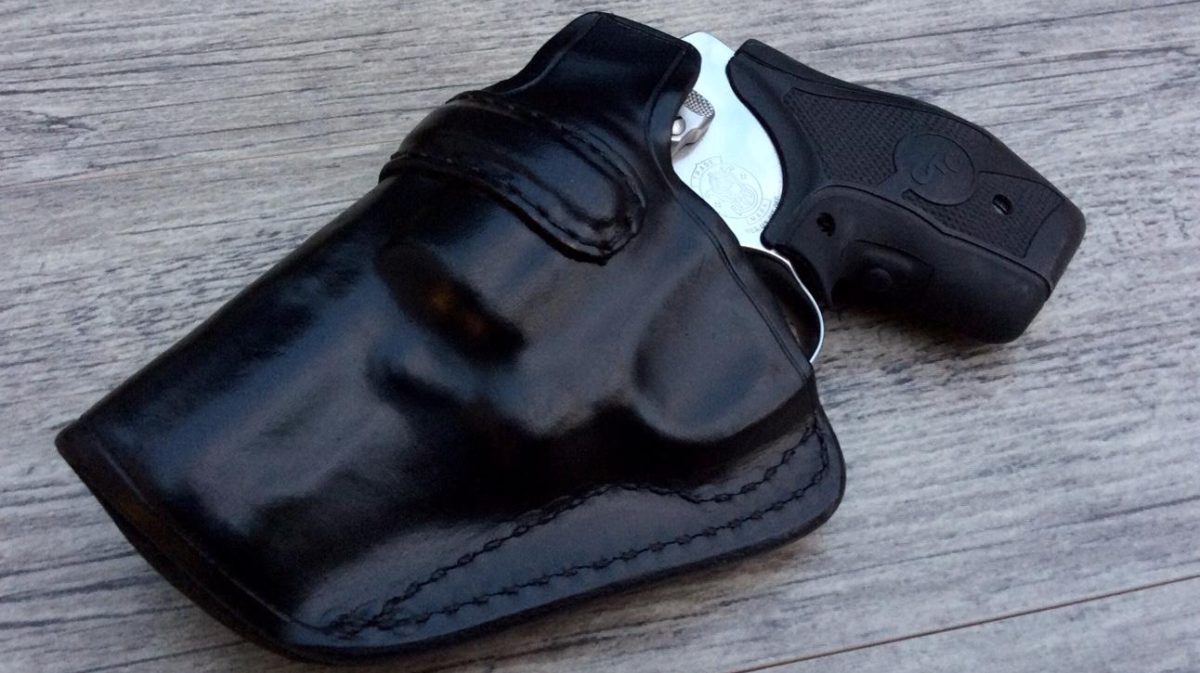
So if I’m reading this correctly, there’s going to be more two gun carry in your future..??
Meanwhile, I’ll have to look into this company. I generally carry three inch tubes, and have trouble finding holsters in that size.
Sadly, I don’t think they offer the 160A for 3” barrels, but you could contact them and see if they could accommodate the request. They’re good folks there.
Second gun? I believe in the concept, but run out of space quickly. I tend to wear jeans a lot, and by the time I fill pockets with wallets, keys, phone, knife, light, handkerchief, etc. there’s not a lot of space left to put a second gun in there. I carry a TQ on a Flatpack carrier at 11 O’Clock, so that eliminates carrying two guns up front. If I wore cargo pants more often, I would stand a better chance of making two guns work.
How do you guys do it?
I don’t always carry a second gun, but I have a pocket free for it. I do it by doubling up. In one front pocket, I carry my keys along with a leather organizer/holster that holds my pepper spray and pocket knife. I carry an ASP Key Defender and a Victorinox Waiter, so those are more convenient options than some other pepper spray or knife choices. In the right rear pocket, I carry my wallet and flashlight (a Streamlight Stylus Pro – not an “all the lumens” options, but one that I will carry, has the switch type that I want, no extra modes to cause problems, and uses convenient batteries). The left rear pocket holds my phone and handkerchief. That leaves the other front pocket free for a speed loader or a second gun.
I wear slacks rather than jeans, so that may make a difference in how feasible some of this is (for example, I would probably want an ASP Palm Defender if I wore jeans more). That said, I don’t have any more pockets than you (one less, if you count the watch pocket on jeans), so it is theoretically feasible. Of course, theory and practice have a bad habit of not lining up well…
Greyson,
Where’d you get your leather organizer? I’m in the market for something along those lines.
Thanks!
Justin
I made mine. It was inspired by the Raven Concealment Pocket Shield and Hawaiian Punch spray carrier that Short Barrel Shepherd shows in this post: http://shortbarrelshepherd.com/just-the-tip-adjusting-asp-key-defender-inserts-for-carry-in-a-pocket-shield/ . I do seem to have a similar issue to the one described in that post, but to a lesser degree. If you are looking for purchasable equivalent to mine, the closest thing I have found are the offerings from this Etsy shop: https://www.etsy.com/listing/478061087/custom-made-pocket-sheath. Mine is wider and shorter than theirs, but they could probably do something similar since those made to order. Just FYI, my organizer is 5″ wide, 3″ tall at the tallest point (it is basically a half crescent to fit the shape of my pockets), and the pockets for my knife and spray are both 2″ deep.
Thank you! I don’t think I’m up to making my own, but I reached out to Pine Barrens Leather. Love the concept!
I have just enough “prosperity” as one tailor put it to fit a couple weapons on board. Not that I do it all the time.
Oh! And usually I’m carrying OWB which makes it easier.
In New Mexico it’s against the rules to carry two guns concealed at one time so I just stuck with my LCR or Springfield xds,Either disappears iwb.
No foolin? Very interesting! I hadn’t heard of a restriction like that before.
I would agree with all of your holster prejudices and add that I don’t like the mounting point (regardless of whether it is a clip of belt loops) being over the cylinder. I really like the look of the back of this holster, but once I saw the front, I reacted much the same as you (“move on, nothing to see here”). I’m glad this holster worked out better than either of us expected.
In looking at the Aker site, I would be really curious to learn more about the Model 140. The clips look like one of the older piece of junk clips, but the concept is interesting and might make a really comfy rig for 3″ or 4″ barreled guns.
I think the same (160A-style) clip is used on the 140, with the little recurve hook inside.
I actually like the clip over the cylinder. It makes the package wider, but it supports the load evenly and the gun stays oriented the same way.
I played with a holster like the 140 from another manufacturer and didn’t like it. Holsters with a single mounting point, located off-center, tend to allow the whole package to rotate on the belt. This complicates the draw, because every time you reach for the gun, the grip is in a different place. Also, the grip tends to sink close to the belt line, robbing you of necessary clearance to establish your grasp on the gun.
I’ll take a wider package if it presents the grip consistently.
I would agree that single off-set clips or loops have issues. I tend to use two off-set clips or loops because it gives me stability without the extra thickness. I think that is more of an issue for me since I shoot left handed, and the tail of the belt means any extra girth is exaggerated by having two layers of belt (that or I might just not have the right build to get away with single clips over the cylinder).
Thanks for the feedback on the Model 140-style holster. I hadn’t tried anything like that, so it’s good to hear of the experiences of others.
Two offset clips is a great way to go, and I can see why you would favor that.
Here’s a serious question for you, which may seem funny at first. How do you wear your belt as a lefty? When it’s threaded onto your pants and buckled up, does the tongue point left or right?
As a righty, the tongue points to my left, which gives me a single thickness of belt to the right of my buckle, where my gun rides. From your description, it sounds like you might wear your belt the same way, but since your gun is on the left side, you have to contend with two layers of belt. That’s gotta make things tough! Would you consider threading your belt “backwards?”
As a righty who shoots left handed, I wear my belt right handed like you (with the tongue to the left). It does make things tougher, but I’ve been wearing a belt for about 15 years longer than I’ve been carrying a gun, and changing the belt orientation just feels really weird (actually, “creepy” is the word that comes to mind).
My daily holster is one I made, but the closest commercial equivalent would be the Tucker Gun Leather “Texas Heritage Revolver”. This design lets me place the clips so that they hide behind the belt a little better and the cylinder sits right where the buckle is connected to the belt body (I carry a little closer to 12 o’clock than some folks partly because of this issue). This position isn’t perfect but it keeps me from having the gun, a clip, two layers of belt, and the keeper for the tongue all stacked up top of each other. Instead, it is just the gun and two layers of belt.
Ok, I’ve been wearing my belt threaded the wrong way for about 3 days now and I can already see the concealment advantage. I can also see where a single clip becomes more viable (though, I will probably stick with double clips for the foreseeable future). I still feel like I am relearning to dress myself and absolutely hate that part of the change, but I think this will be worth getting used to.
Next you’re going to convince me to stop tucking in my shirts, aren’t you?
Haha! Working on it! All part of my eeeevil plan.
“No that’s not a pita….”
Great article Mike! Very fun to read!
Thanks Steve! Justin wants to know how I can manage to be so wordy about a piece of dead cow skin! ?